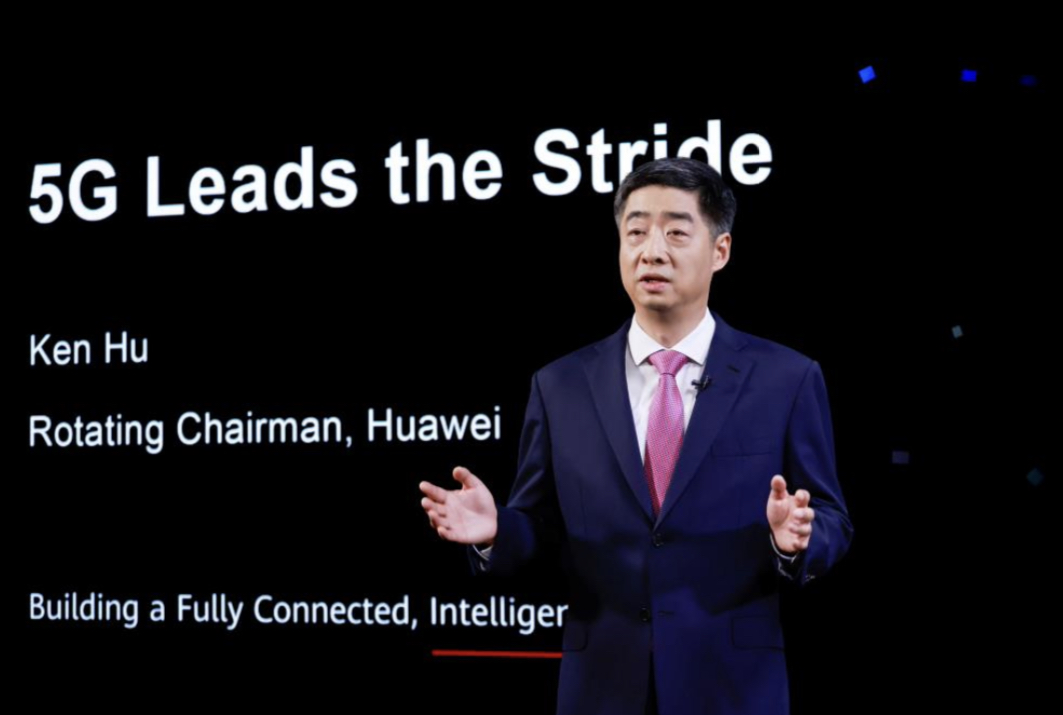5G is enabling new service scenarios, applications, and business models, paving the way for unprecedented growth opportunities in the industry. How should we seize these opportunities? In Huawei’s 13th Global Mobile Broadband Forum (MBBF) which kicked off in Bangkok, people might find the answer.
During the event, Huawei Rotating Chairman Ken Hu gave his keynote speech, “5G has grown faster than any previous generation of mobile technology,” he said, “In just three years, we’ve seen solid progress in network deployment, consumer services, and industry applications.”
“5G is in the fast lane,” he continued, “and we should all be proud of the progress we’ve made. But there’s more we can do to maximize its value. We need to work together to fully unleash the power of 5G networks and expand into services like cloud and system integration. Together, we can drive leapfrog development in 5G networks, applications, and the industry as a whole.”
As of October 2022, more than 230 carriers around the world have launched commercial 5G services. In total, the industry has set up over three million 5G base stations, serving more than 700 million subscribers.
In telecoms, consumer services still account for the bulk of carrier revenue. As 5G becomes more prevalent, its vastly superior experience is driving new shifts in consumer behavior, including a sharp rise in high-definition video traffic. New mobile applications that take advantage of 5G’s greater speeds and lower latency have doubled average user data consumption (DOU) and are increasing average revenue per user (ARPU) by 20%–40%, contributing to steady growth in carrier revenue from connectivity.
At the same time, B2B 5G applications are also becoming a new engine for carrier revenue growth, producing considerable value in industries like oil and gas, manufacturing, and transportation.
These applications are not only innovative – they’re generating real commercial value for carriers. In 2021, for example, Chinese carriers brought in over CNY3.4 billion (roughly USD500 million) in new revenue from more than 3,000 industrial 5G projects. What’s more, these projects also generated 10 times that amount from related data and integrated ICT services.
According to a report released by GSMA in July 2022, the importance of 5G technology and its role in enabling digital transformation is one of the pillars of the National Broadband Plan (NBP) in the Philippines. It outlines strategies and initiatives that should be taken to increase accessibility, affordability, and network quality, country-level 5G Availability almost doubled within a space of a year — from 9.4% in Q1 2021 to 18.1% in Q1 2022.
Ms. Lara Dewar CMO of GSMA said during the MBBF 2022 keynote that, we need to work together to unlock the full potential of connectivity.
B2B 5G applications are poised to become the fastest growing revenue stream for carriers. 5G is enabling new service scenarios, applications, and business models, paving the way for unprecedented growth opportunities in the industry.
“To seize these opportunities,” said Hu, “there are a few things we need to do.”
Building out networks for better user experience
Beyond expanding coverage, networks should be built in a way that optimizes different types of user experience. For example, Chinese carriers have optimized their networks for TikTok and other popular video services, reducing first input delay by 50% and frame freeze by 90%. This much smoother video experience has doubled data consumption and is attracting new users to 5G services.
Driving the development of 5.5G
To push 5G to the next level, Huawei worked with carriers and industry partners to propose four features for 5.5G, the next evolution of 5G technology: 10 Gbps downlink, 1 Gbps uplink, support for 100 billion connections, and native intelligence.
“The industry needs to come together to define standards, prepare the spectrum, and build out the ecosystem,” said Hu.
Driving service innovation to maximize the value of 5G
With large bandwidth and low latency, 5G can be integrated with cloud and AI to provide entirely new services for consumers and businesses alike. Carriers can deliver new experiences like extended reality (XR), cloud gaming, and enriched calling services for individual consumers, and provide enterprises with more comprehensive digital transformation solutions. These open up new revenue streams, presenting an opportunity for carriers to go beyond connectivity and move into cloud services and system integration.
Industry digitalization is the next wave of global economic development. As a key enabler of digital transformation, 5G opens up a world of new opportunities. But the ICT ecosystem needs to work together to make the most of them. “If we work together, we can drive leapfrog development in 5G networks, applications, and the industry as a whole,” Hu concluded.
The Global Mobile Broadband Forum 2022 is hosted by Huawei, together with its industry partners GSMA and GTI. This annual forum gathers mobile network carriers, vertical industry leaders, and ecosystem partners from around the world to discuss how to make 5G a commercial success, as well as other high-priority industry topics like green development, intelligence, and 5G evolution.














